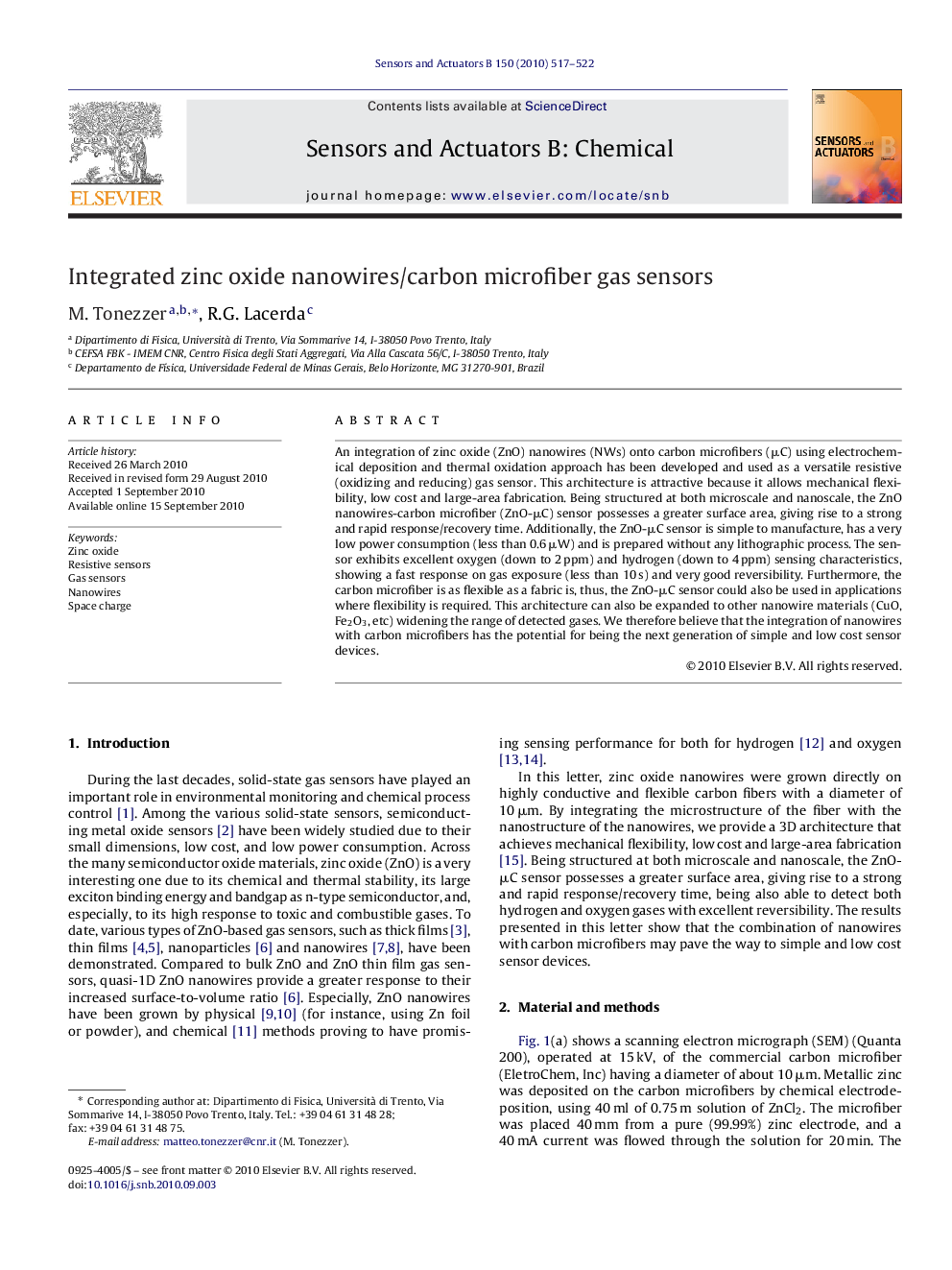| Article ID | Journal | Published Year | Pages | File Type |
|---|---|---|---|---|
| 751139 | Sensors and Actuators B: Chemical | 2010 | 6 Pages |
An integration of zinc oxide (ZnO) nanowires (NWs) onto carbon microfibers (μC) using electrochemical deposition and thermal oxidation approach has been developed and used as a versatile resistive (oxidizing and reducing) gas sensor. This architecture is attractive because it allows mechanical flexibility, low cost and large-area fabrication. Being structured at both microscale and nanoscale, the ZnO nanowires-carbon microfiber (ZnO-μC) sensor possesses a greater surface area, giving rise to a strong and rapid response/recovery time. Additionally, the ZnO-μC sensor is simple to manufacture, has a very low power consumption (less than 0.6 μW) and is prepared without any lithographic process. The sensor exhibits excellent oxygen (down to 2 ppm) and hydrogen (down to 4 ppm) sensing characteristics, showing a fast response on gas exposure (less than 10 s) and very good reversibility. Furthermore, the carbon microfiber is as flexible as a fabric is, thus, the ZnO-μC sensor could also be used in applications where flexibility is required. This architecture can also be expanded to other nanowire materials (CuO, Fe2O3, etc) widening the range of detected gases. We therefore believe that the integration of nanowires with carbon microfibers has the potential for being the next generation of simple and low cost sensor devices.
